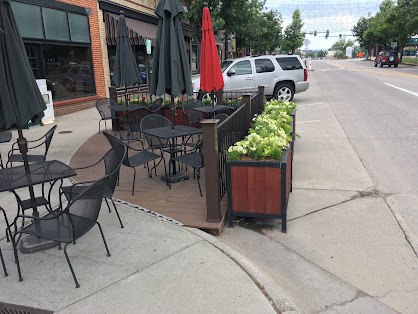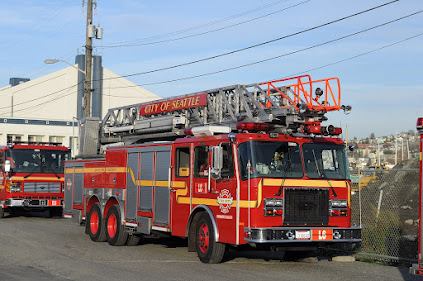 |
| Fun outdoor activities and safe walkability - keys for liveability |
by Mateja Mihinjac
As I was going about my midday nature walk this week I was listening to a podcast on the importance of everyday movement and physical activity. In that podcast, walking was presented as a basic form of activity that humans have evolved to do. This resonated with a number of recent consulting projects in our SafeGrowth Network related to unwalkable streets, pedestrian fatalities, and unhealthy outdoor environments.
I am lucky to live in an area where I can access a nearby forest or complete my errands within a 15-minute walk. Many people in other places do not have this opportunity and this drawback has serious physical and mental health implications.
 |
| Playful design encourages playful outdoors |
PUBLIC HEALTH
Many studies over the past decade have shown a connection between walkability and health. For example, a Belgian study showed how more walkable neighbourhoods promoted better health outcomes for older adults than those lacking walking infrastructure.
A Canadian study demonstrated the importance of built environment that supports walkability for promoting fitness activity and consequently health outcomes. In Japan, researchers found a link between cardiovascular mortality and neighbourhood walkability. One Malaysian study showed how living in a walkable neighbourhood contributes to higher levels of perceived quality of liveability compared to those living in less walkable neighbourhoods.
As we describe in our 3rd Generation CPTED theory, with easy access to green infrastructure, walkable neighbourhoods also create positive mental health effects. One such example is the Japanese practice of deep relaxation in the forest or forest bathing, especially welcome in hectic city environments.
 |
| Physical health is related to positive mental health |
In this era when we are so concerned about mental health and crime triggered by mental illness, we must build cities that encourage walkability and movement. Humans are meant to move and be active and motivation for movement needs to be clearly integrated into urban design.
Fortunately, some cities have attempted to encourage movement by gamifying physical activity – consider the famous example of the piano stairs in Sweden. Additionally, new city-wide initiatives have emerged for redesigning cities, that build on this movement concept, such as the Parisian “15-Minute City” concept.
 |
| Walkability takes place above and below ground |
“15-MINUTE CITY” – A CASE FOR WALKABILITY?
Carlos Moreno, the main author behind the “15-Minute City” suggests that cities need restructuring so that they offer access to amenities within easily accessible distance. He suggests achieving this through increasing the density of people and services, close proximity to activities, diverse populations and land uses, and digitalization in line with Smart City developments.
The steps recognise the importance that the built infrastructure plays in promoting walkability and physical activity. These steps also closely relate to the principles of holistic and integrated neighbourhoods in Third Generation CPTED and SafeGrowth.
Yet, despite the difficult-to-refute importance of integrated, dense and walkable neighbourhoods, the 15-Minute City has met resistance. Some criticize the concept as a conspiracy to prevent people from moving freely beyond their neighbourhoods. Others claim it is a socialist concept with an intent to restrict personal freedoms and to control the population.
 |
| Positive outdoor activities at night - sometimes colourful lighting helps |
Many of these conspiracy claims were conflated with COVID restrictions that coincided with the popularisation of the 15-minute city and it remains a sore point for many.
Another criticism of neighbourhood walkability is voiced by those who claim that walkable and liveable neighbourhoods are elitist and promote displacement and gentrification.
It may equally be true that those who voice such concerns are more worried about increases in housing prices and land values.
 |
| Street furniture, too, plays a role in walkable cities |
MOVING FORWARD WITH WALKABILITY
While these concerns should not be disregarded, they should not dissuade us from moving forward towards walkable, integrated and liveable cities. It is irresponsible to ignore walkability options given all the evidence related to public health, mental health, and environmental sustainability.
If we are to enhance public health and reduce mental stress, city planning must be part of the answer. It should be well thought out and tailored to specific neighbourhoods to integrate walkability.
In SafeGrowth we strongly believe the pathway to do this successfully resides in partnerships with residents during the planning process. After all, it is in their neighbourhoods where they are walking.








